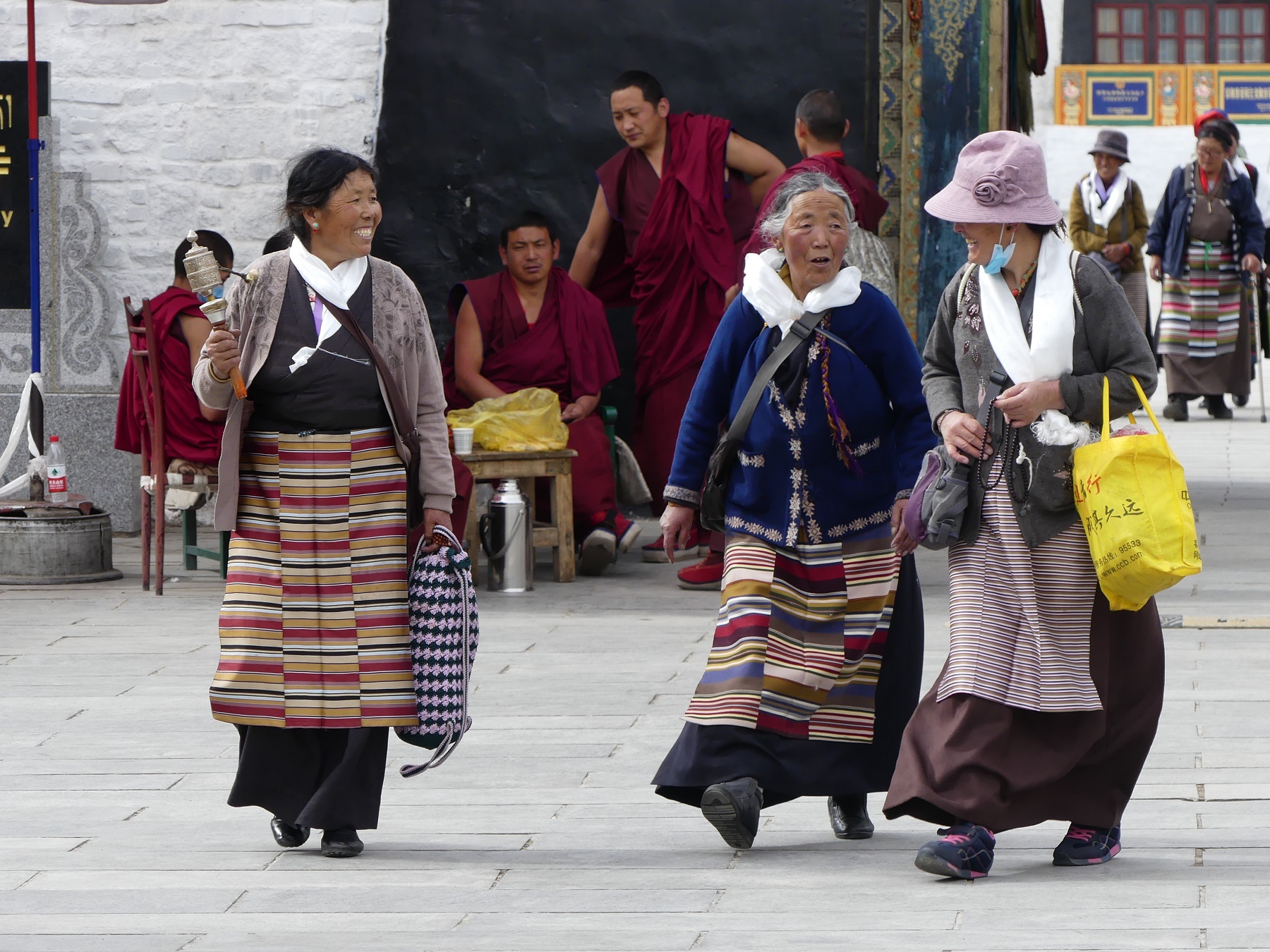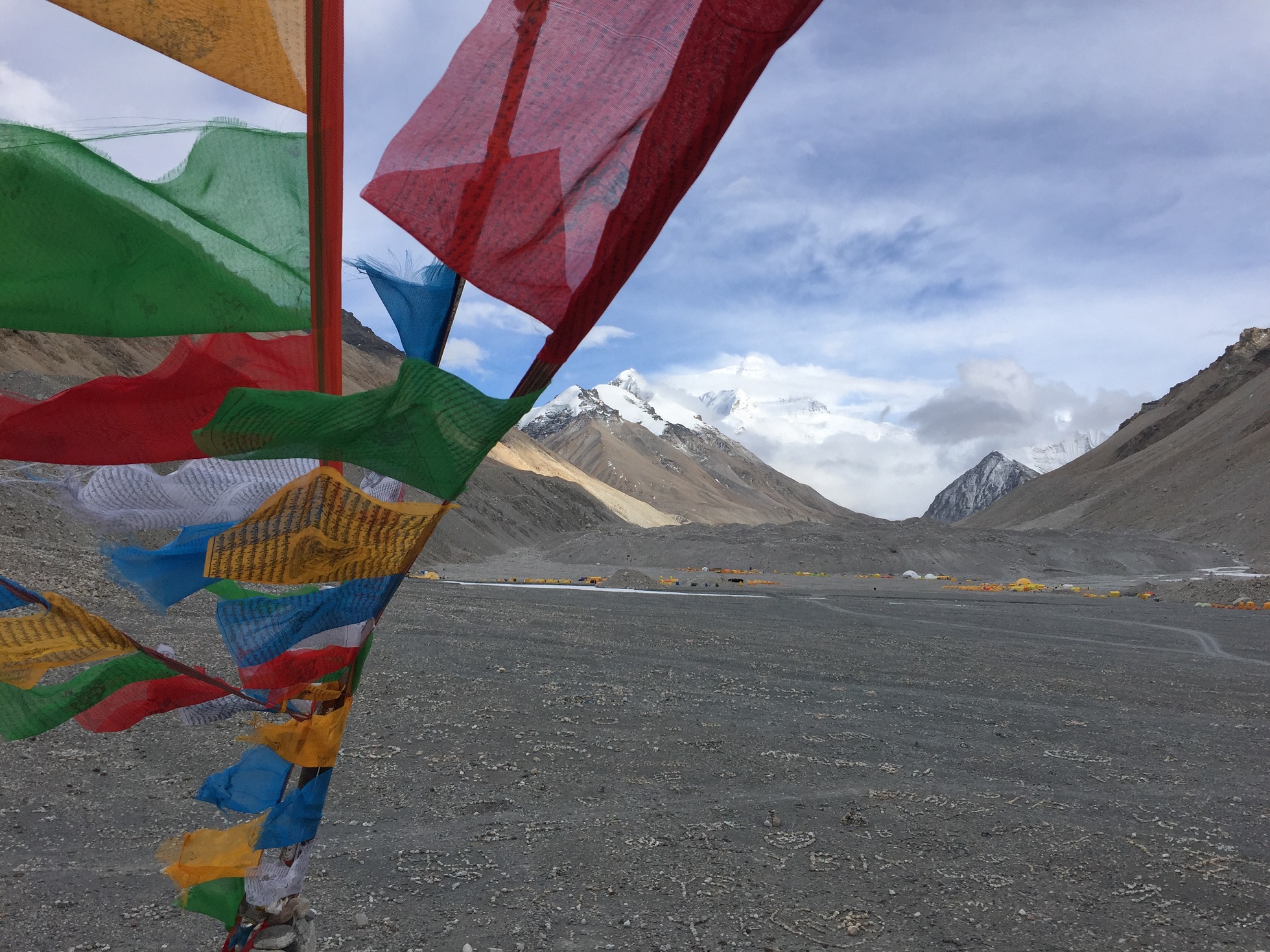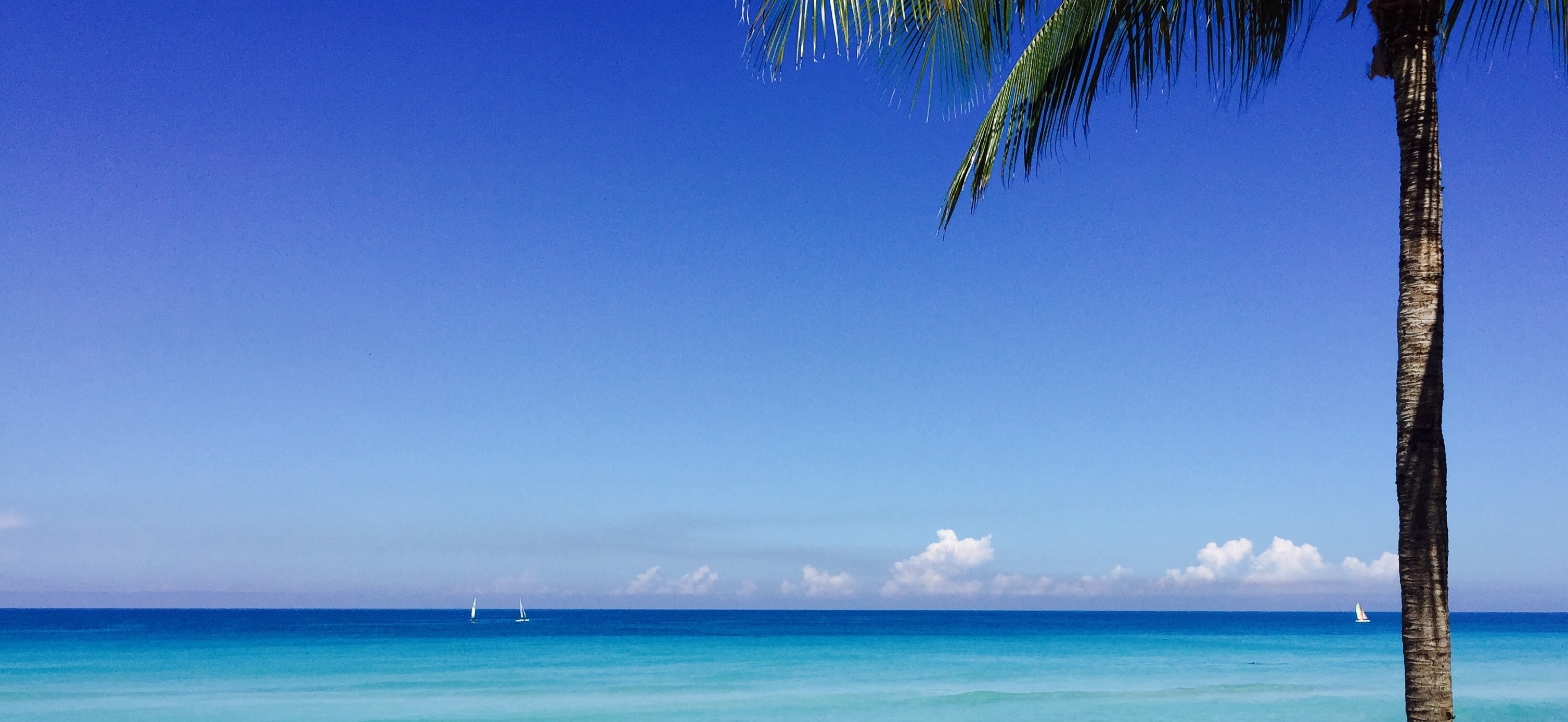I woke up early this morning and wanted to take a few dawn shots of Everest and the stars. Sadly, a thick mist had descended down the valley so I couldn’t see any Everest nor any stars.
We wished Chomolungma (the Nepali name for Mt. Everest meaning “Goddess of the Valley”) farewell and hit the road. Without the anticipation of Everest, the drive back to Shigatse was long and boring. No one was looking forward to being back in Shigatse. The landscape, however, was markedly different from just the day before. So much snow had fallen that it transformed every mountain into the Tibetan dream that I had always imagined.
On the way back we had a quick stop at a local family, to see how they live and enjoy some tea with them. Contact with local Tibetans in their home is forbidden by the Chinese so this was a bit of a treat. It was also rather uncomfortable. They did not speak any English so any attempt at a conversation was done through Gyaltsen. They gave us some butter tea and salted potatoes. The potatoes were delicious, but the tea… well, let’s just say it’s not my cup of tea.
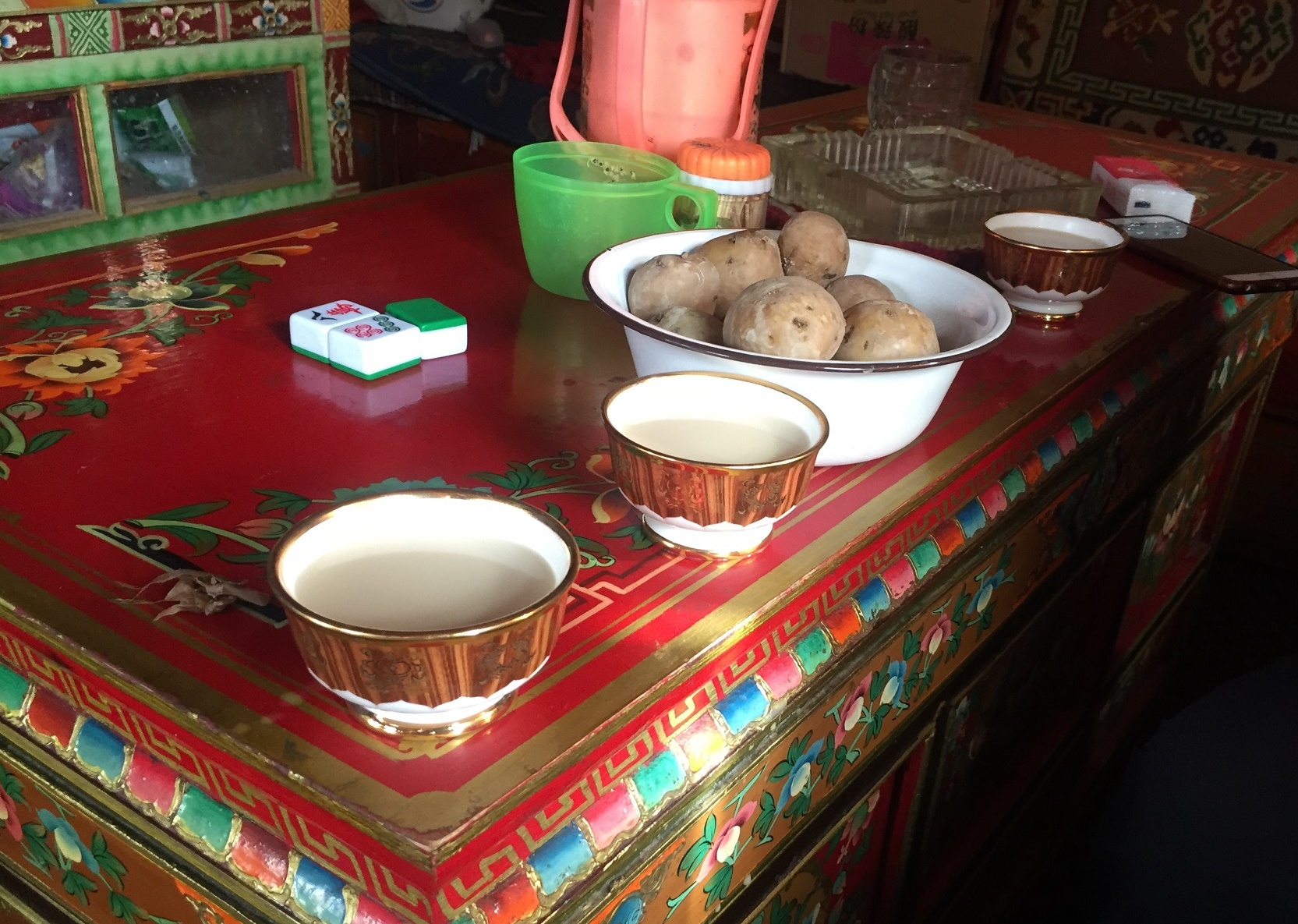
Our hearty meal of potatoes washed down with butter tea
We also tried barley flour – a strange snack. It’s basically barley flour mixed with butter tea rolled into a turd shape. It tasted exactly like that sounds. This was washed down with a barley alcohol home brew that was quite potent.
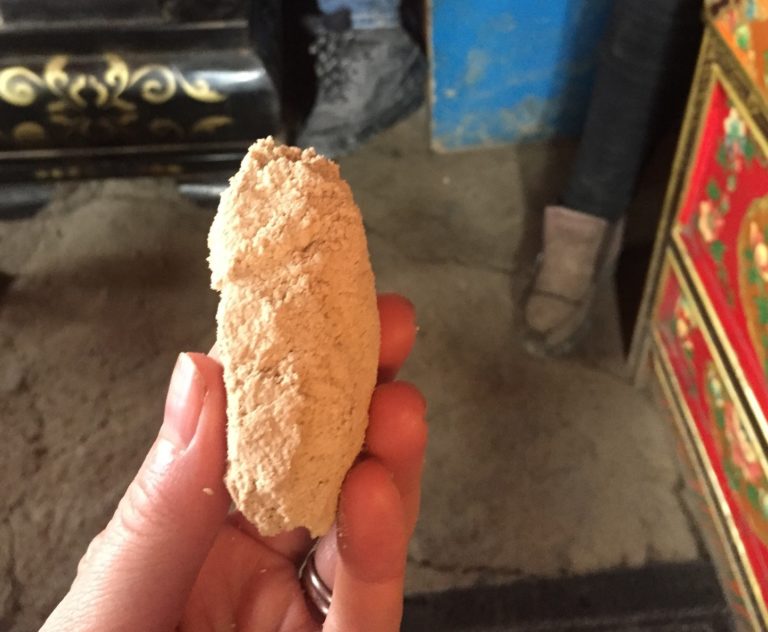
The barley flour snack was a bit strange and, to be honest, not nice at all
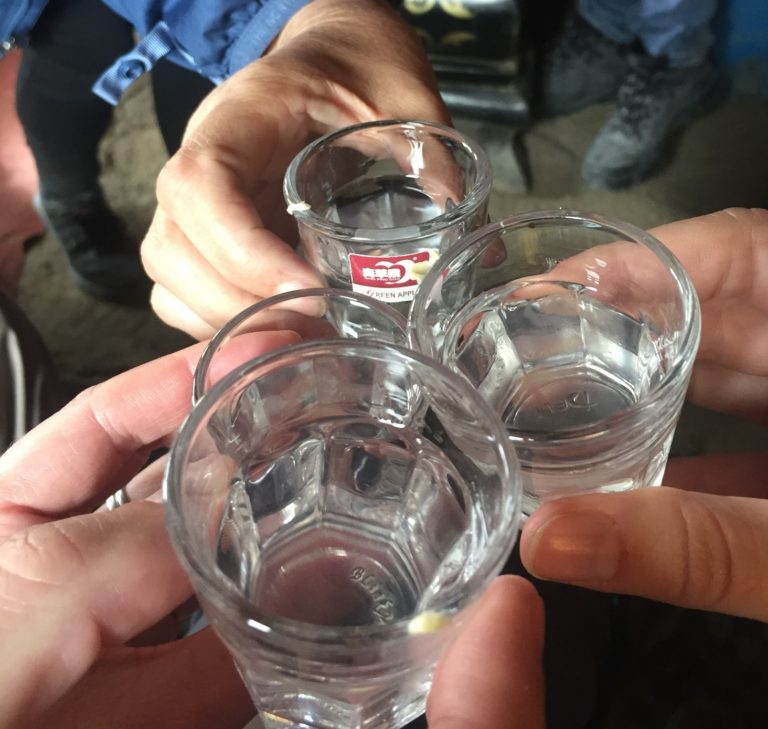
The potent home brew on the other hand was quite nice!
It was very interesting walking through their home. Tibetans keep their animals on the bottom floor, as it helps to keep the rest of the house warm. A few things struck me about this example of a Tibetan house. Firstly, every house keeps their best room as a chapel complete with incense and Buddha statues. These have to be the most spiritual people on the planet. Second, the kitchen and pantry was interesting. Hanging from the ceiling of the pantry were dried pieces of meat. Being South African it was not particularly strange to see people eat dried meat, but they used every possible piece of the animal. There is no such thing as wastage when it comes to living here.
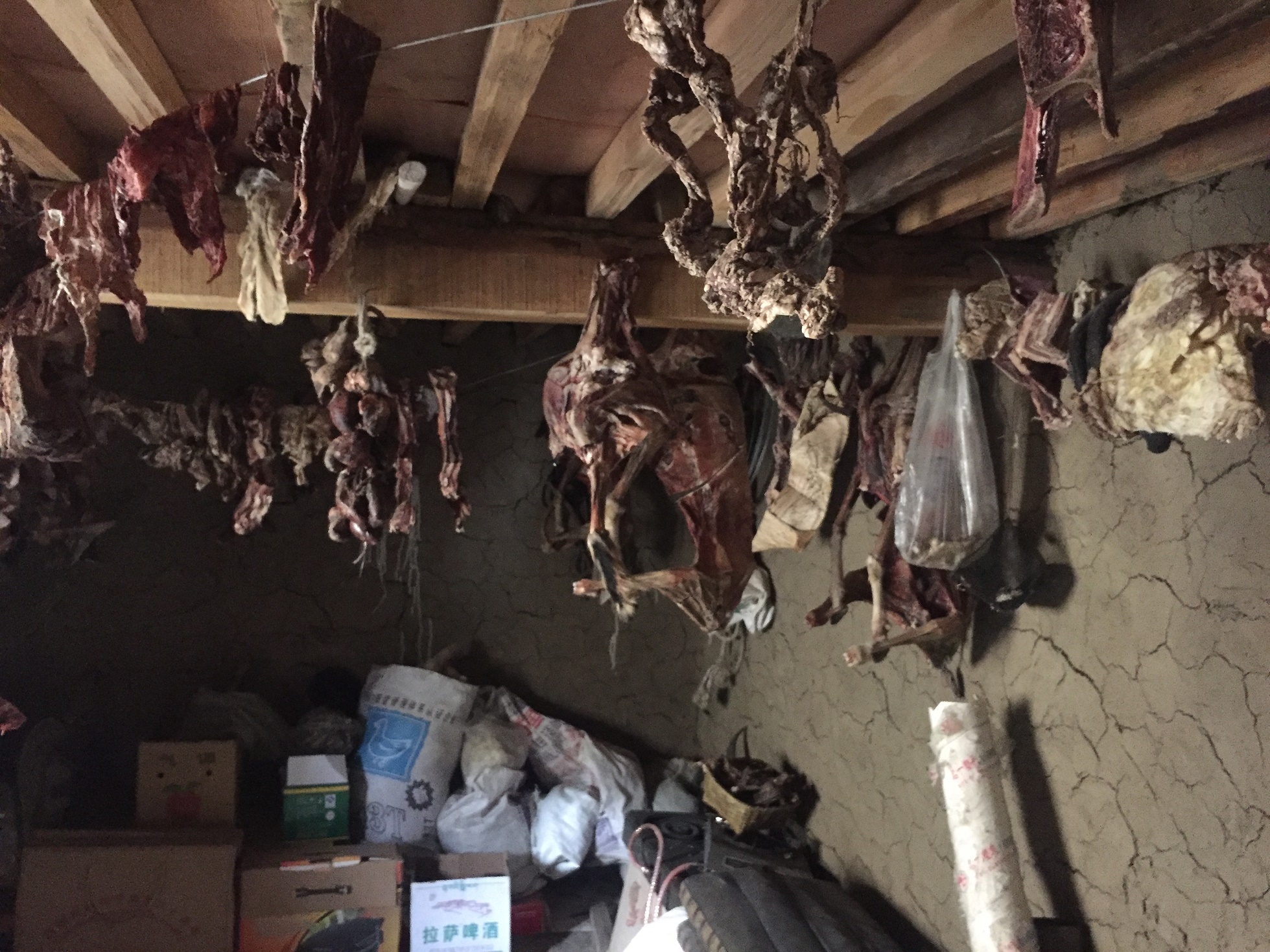
The “biltong” chamber
The biggest surprise was two massive posters of China’s leaders with associated propaganda that hung prominently in the front room. Apparently it is mandatory to have such posters in your house and the local communist party officials can do spot checks and there are severe penalties if you do not comply.
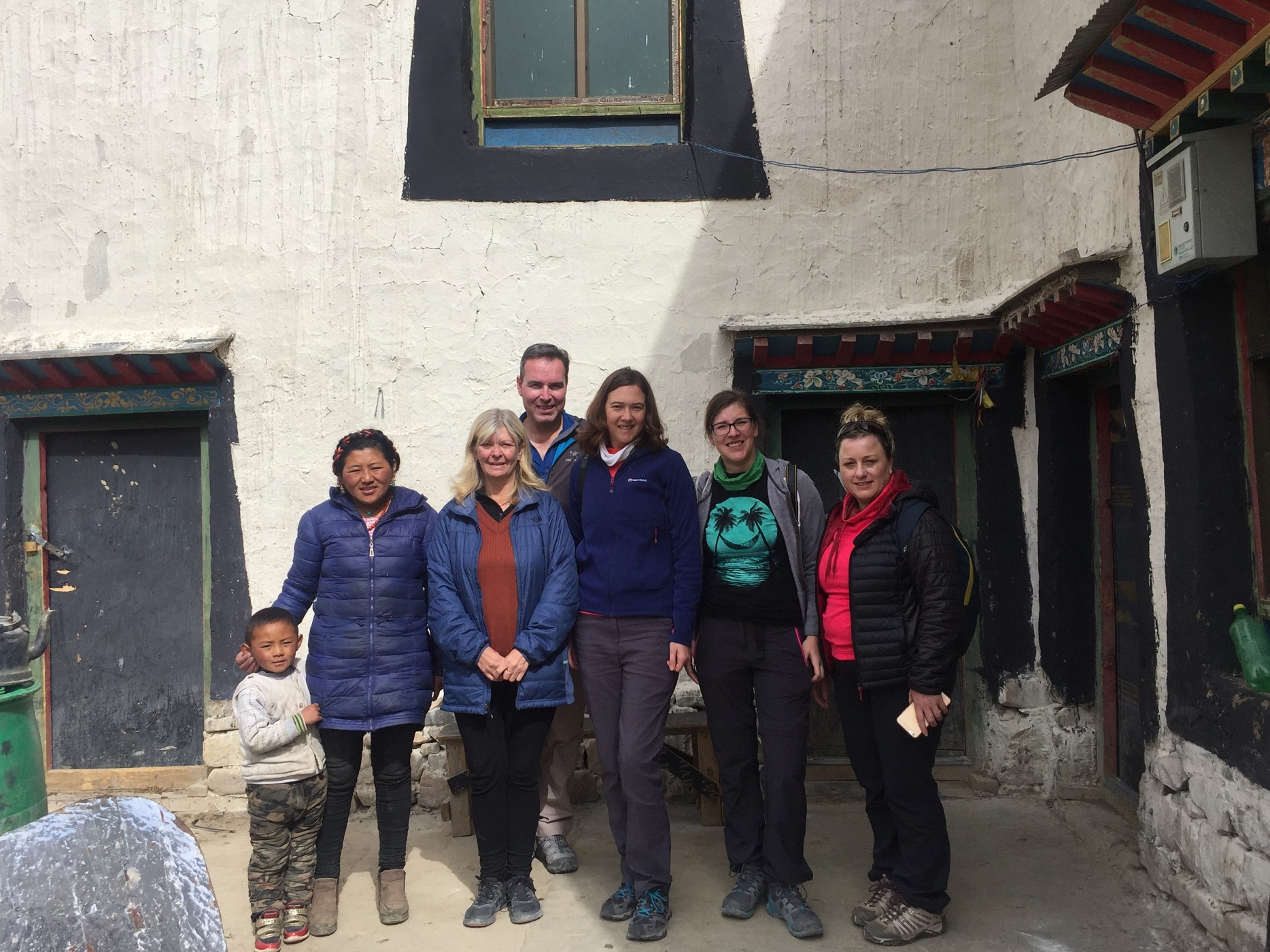
After our visit we decided to drive straight through to Shigatse. If there was one disappointment about Tibet it has to be Shigatse. I could find no redeeming features at all in this town as we struggled to find a decent restaurant to eat in. I have taken to calling it Shit-gatse because the Chinese have really messed it up.
Shit-gatse really lived up to my expectation this time. I was woken up by a rustling noise. Because it was pitch dark I assumed it was Adrie, but when I asked her she said it wasn’t and thought it was me! I turned on my flashlight to reveal a giant rat on the desk on the opposite side of the room!! Snacking on some sweets we had left there. I was so ready to get out of Shit-gatse.
We had a super long drive ahead of us because we were not heading straight for Lhasa, but instead took a detour south via Gyantse and then via Yamdrok Lake.
Gyantse is famous as the sight of a British invasion of Tibet in the early 1900’s. A small contingent of British armed with light artillery and infantry met the might of the Tibetan army – armed with sticks and an amulet blessed by the Dalai Lama to protect them from bullets. 700 Tibetans were slaughtered in 4 minutes. The fort that they died for still overlooks this quiet peaceful town. We did not go into the fort but rather visited the monastery that has the biggest stupa in Tibet.
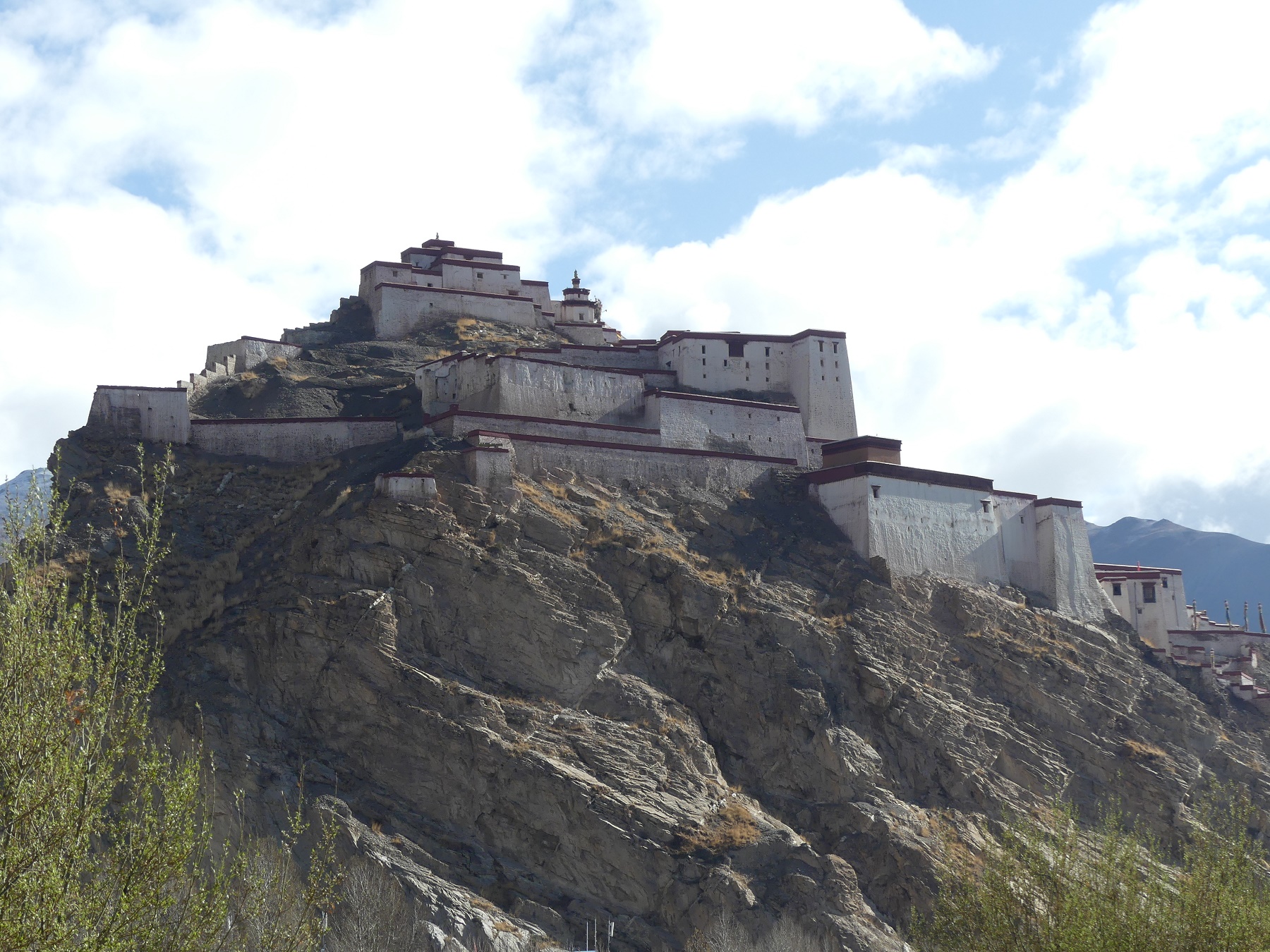
The fort overlooking the town of Gyantse
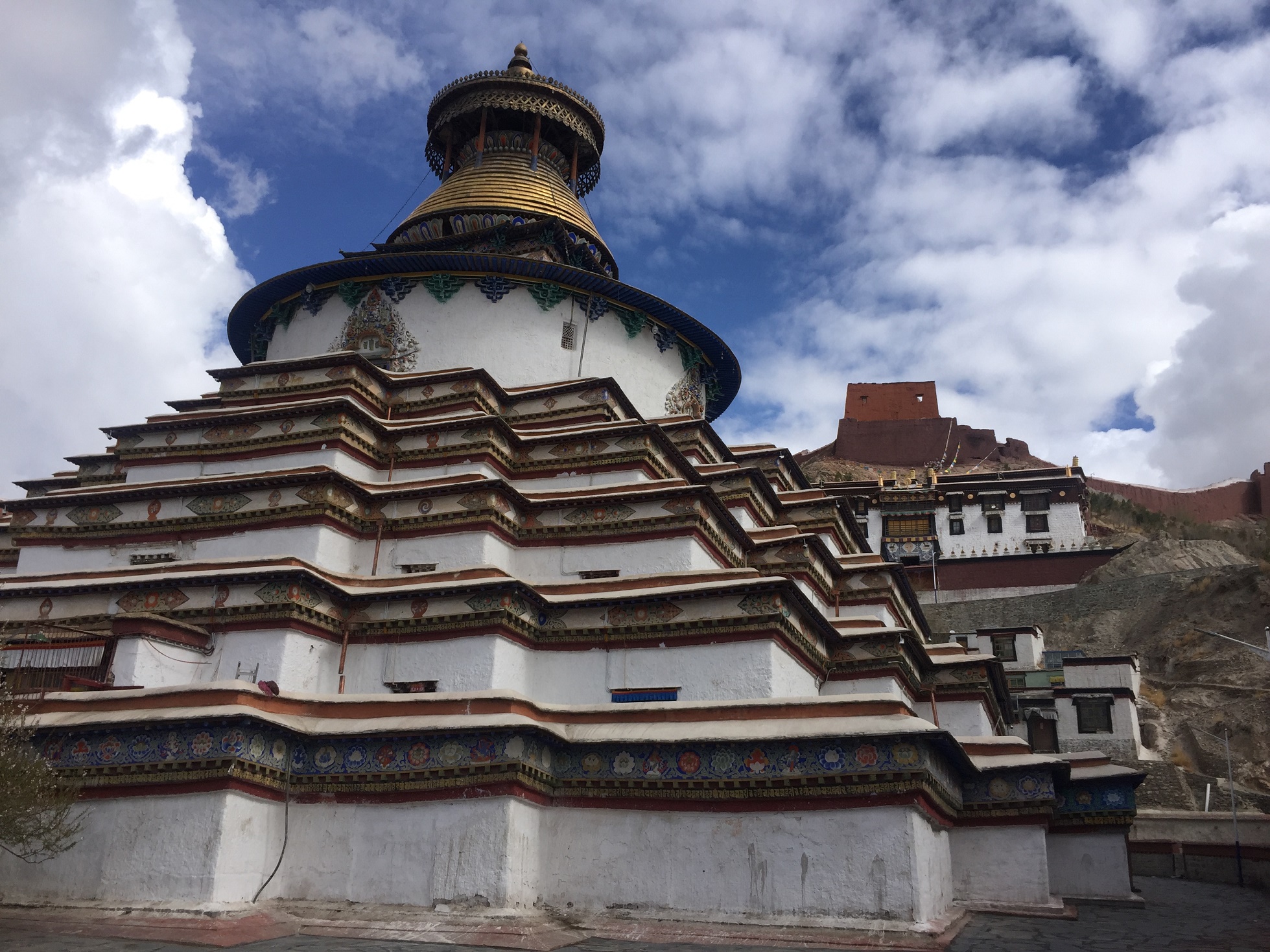
The biggest stupa in Tibet
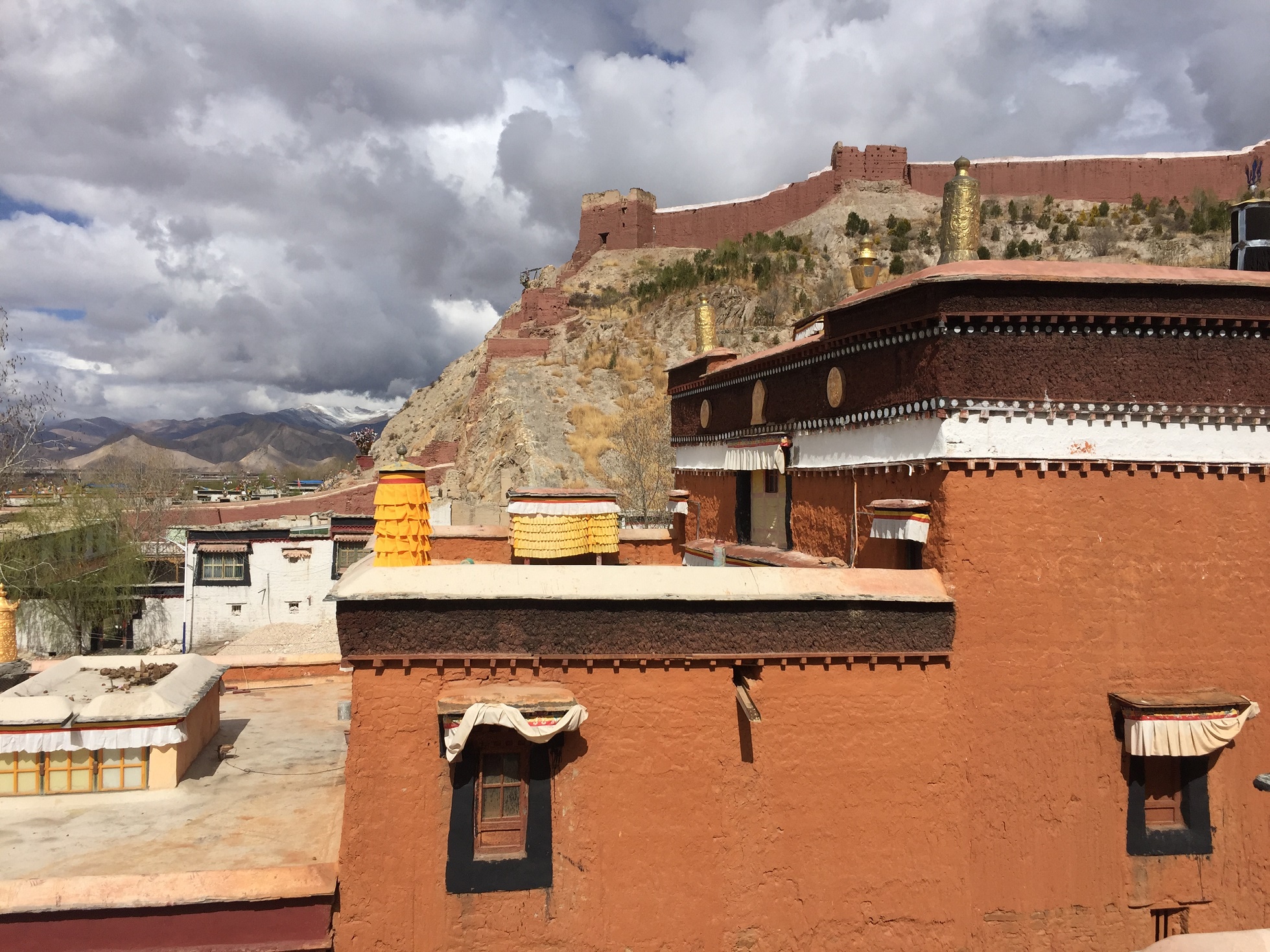
The monastery itself felt more like a real place of worship than any of the other we had visited. The town had a bit more of a village feel to it and the people, as ever, seemed both surprised and pleased to see western tourists. I have lost count of the number of requests to pose for photos with locals.
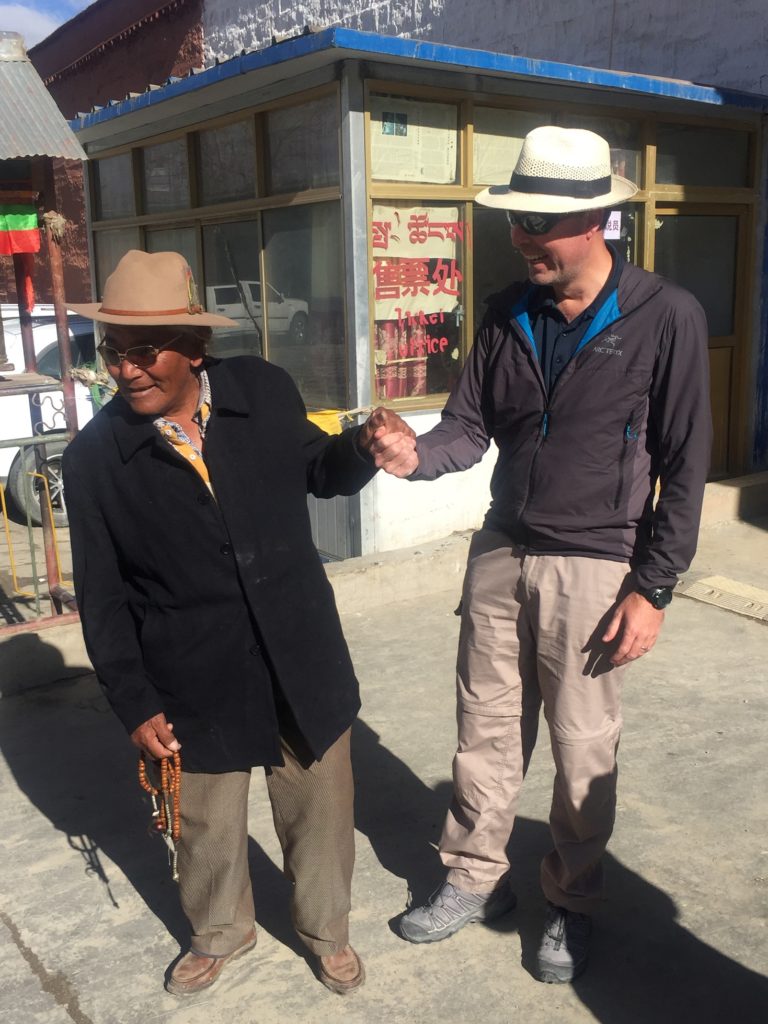
This kind man kept pointing and staring at me so I suggested we take a photo
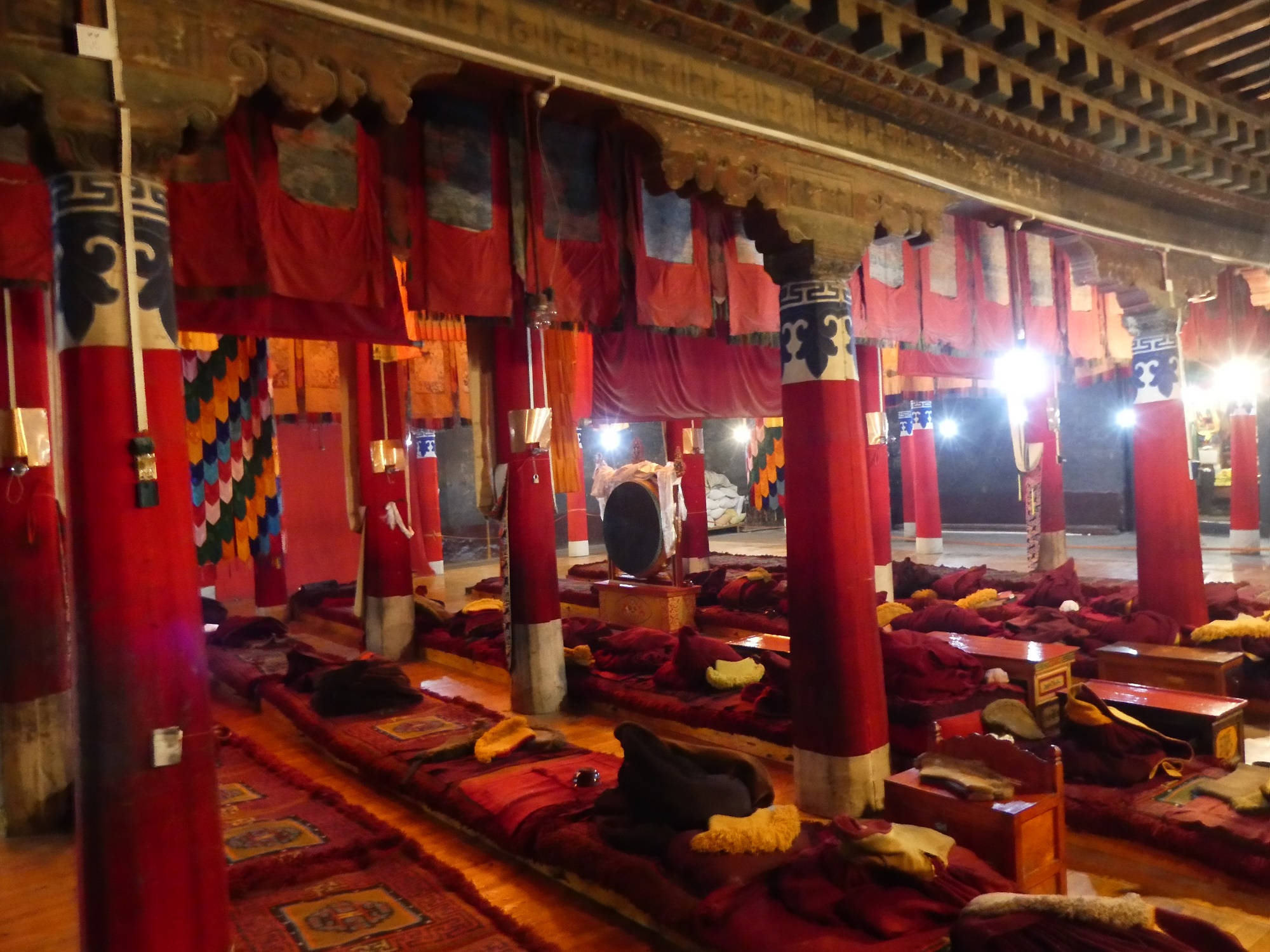
Row upon row of seating for the monks inside the monastery
We drove over several other mountain passes before being confronted with the Karola Pass and the massive Mt Nyenchen Khangsar glacier. The scenery out of the window was indescribable in the way the blue sky contrasted with the white snowy mountains and the brown barren river valleys. Everything was in super-sized proportions. And this was before we descended the pass to be confronted by the turquoise expanse of the massive Yamdrok Lake. The lake is a holy site for the locals and I could see why. It was just stunningly beautiful.
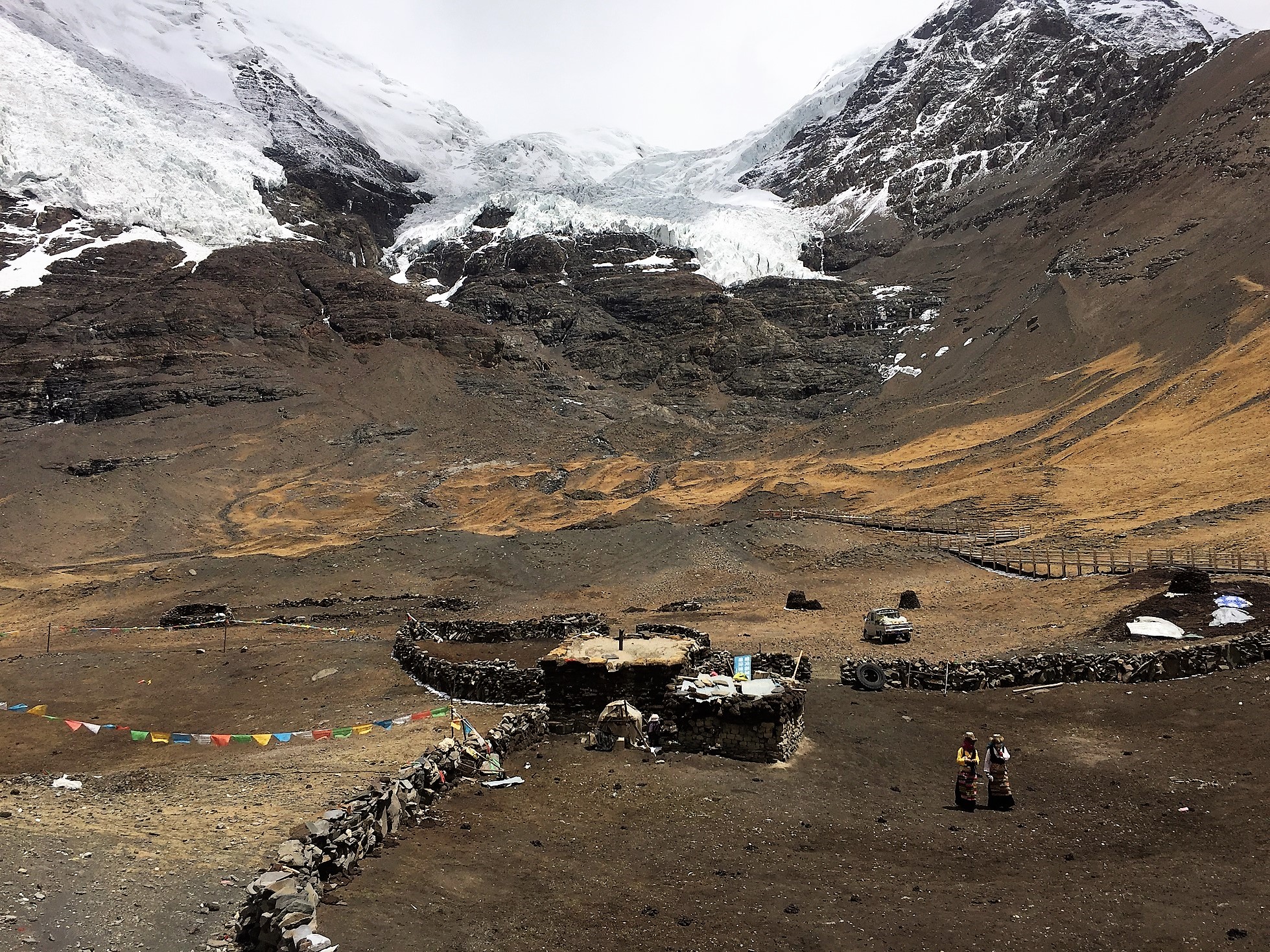
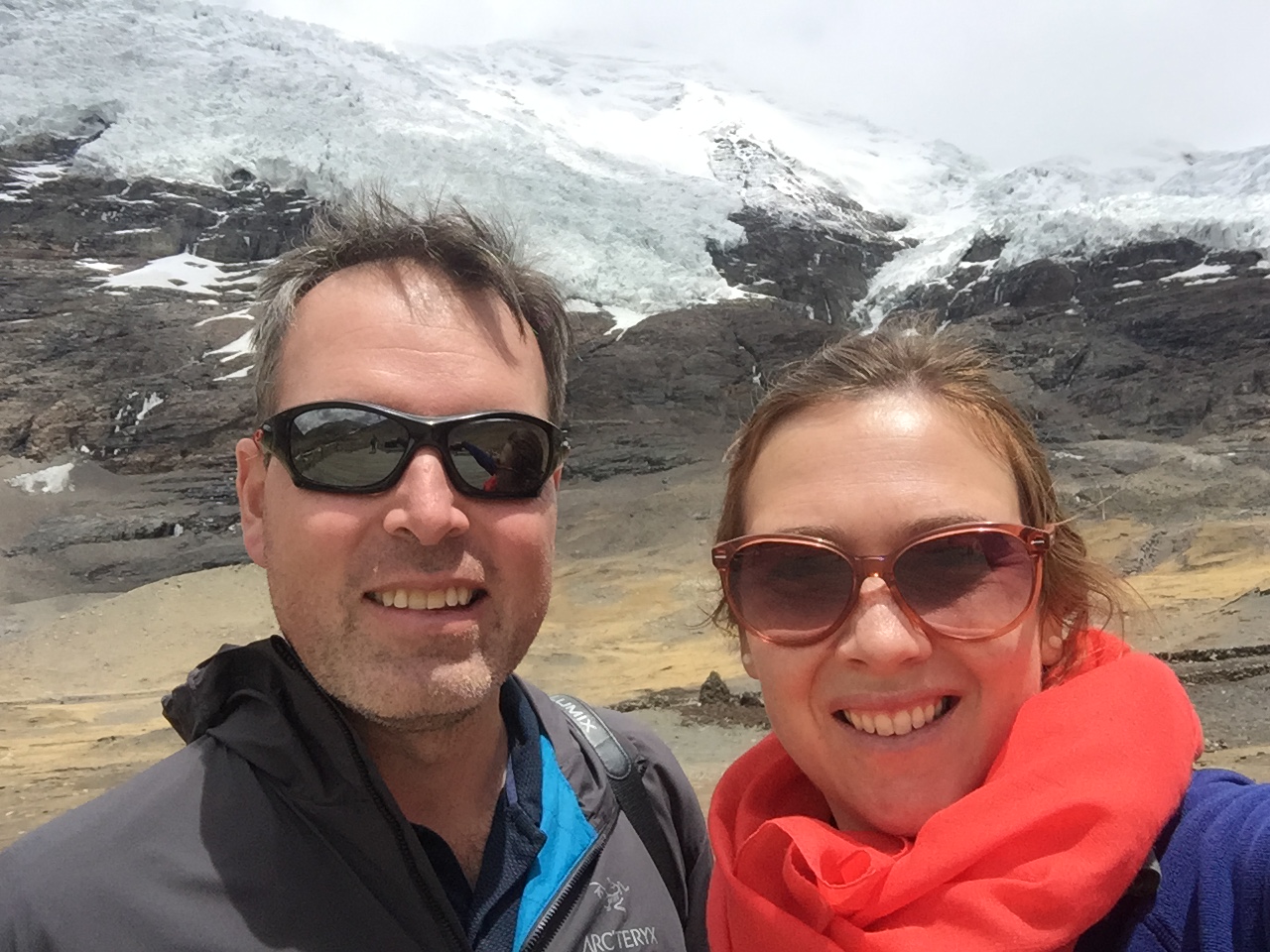
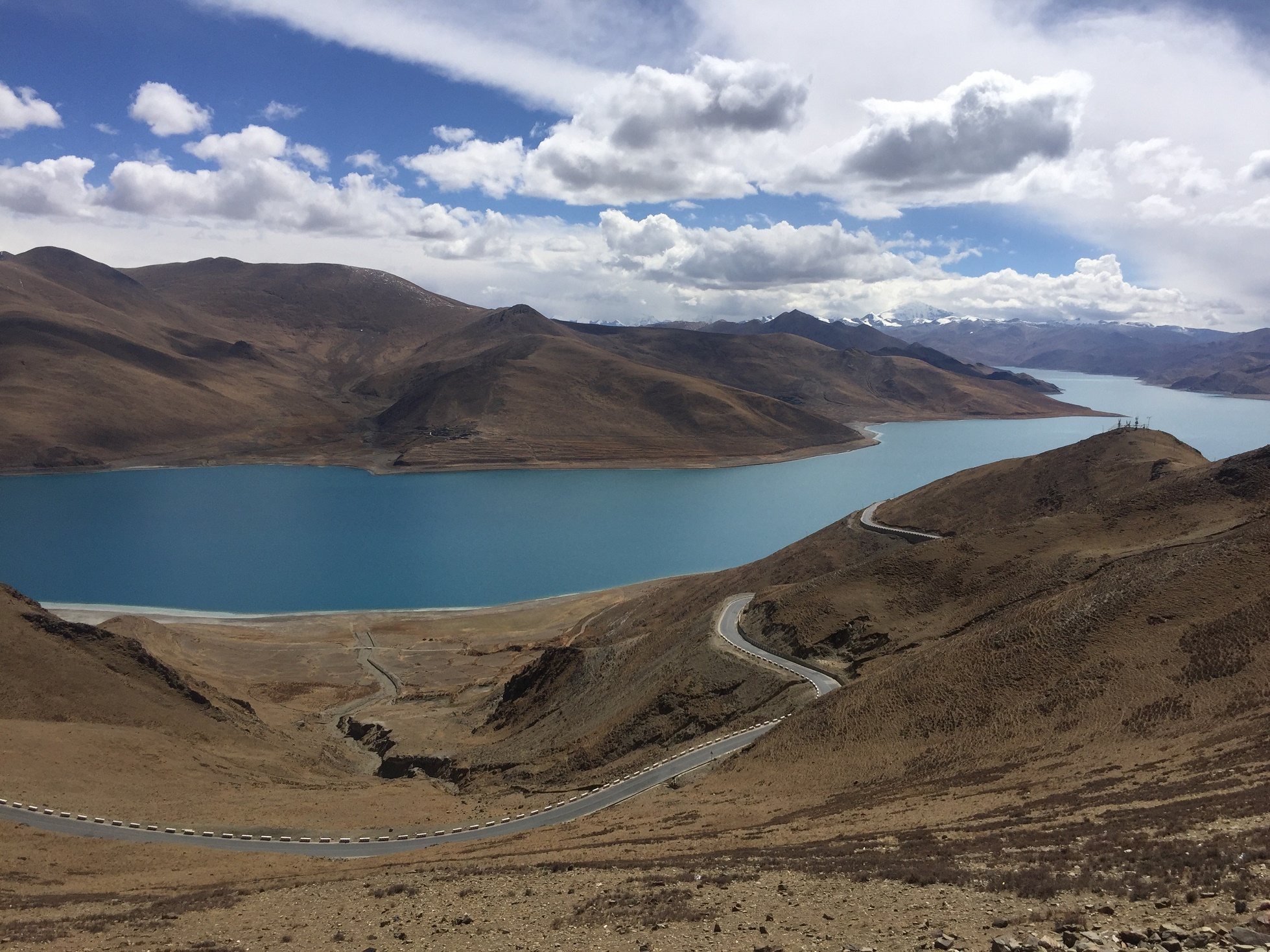
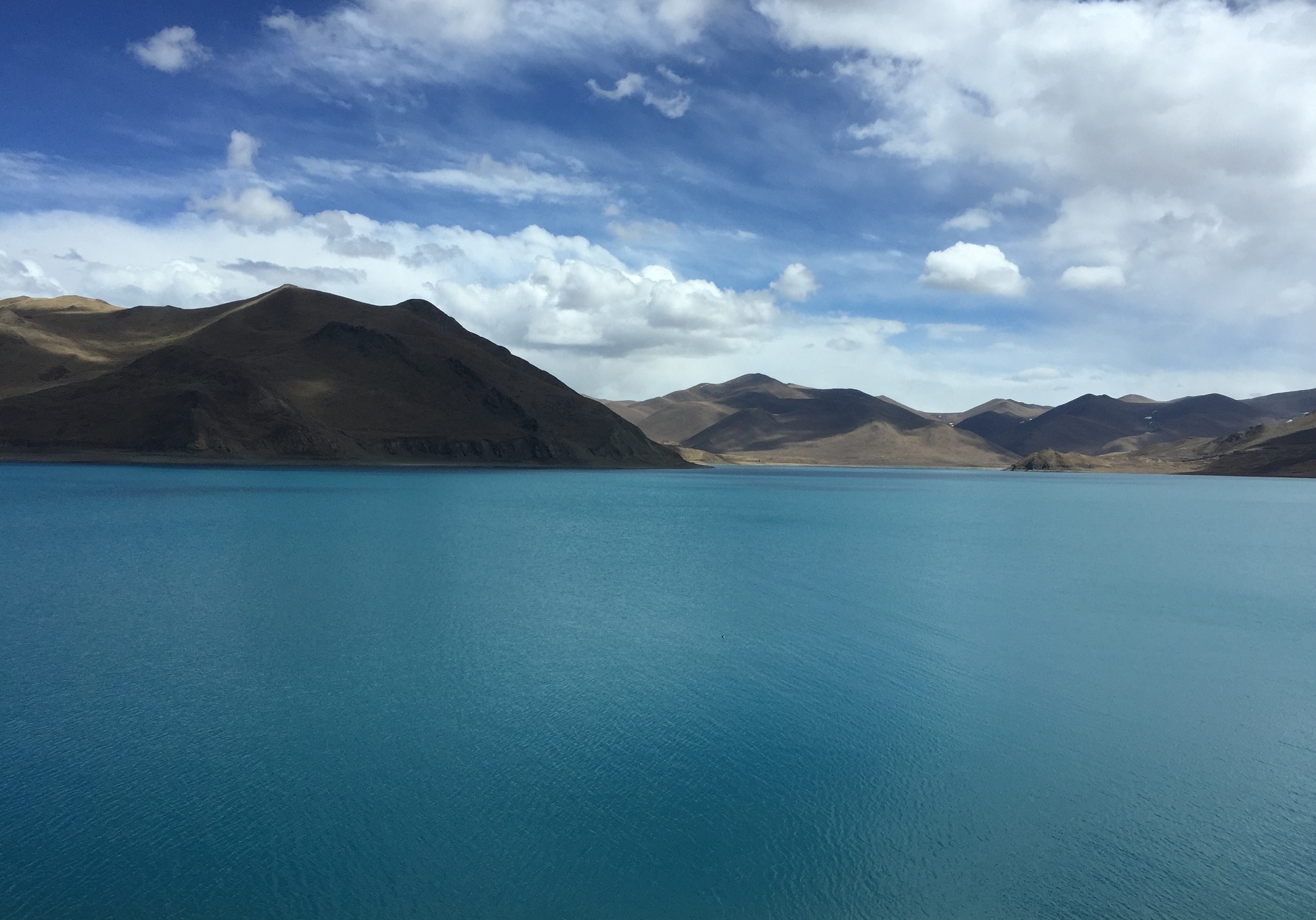
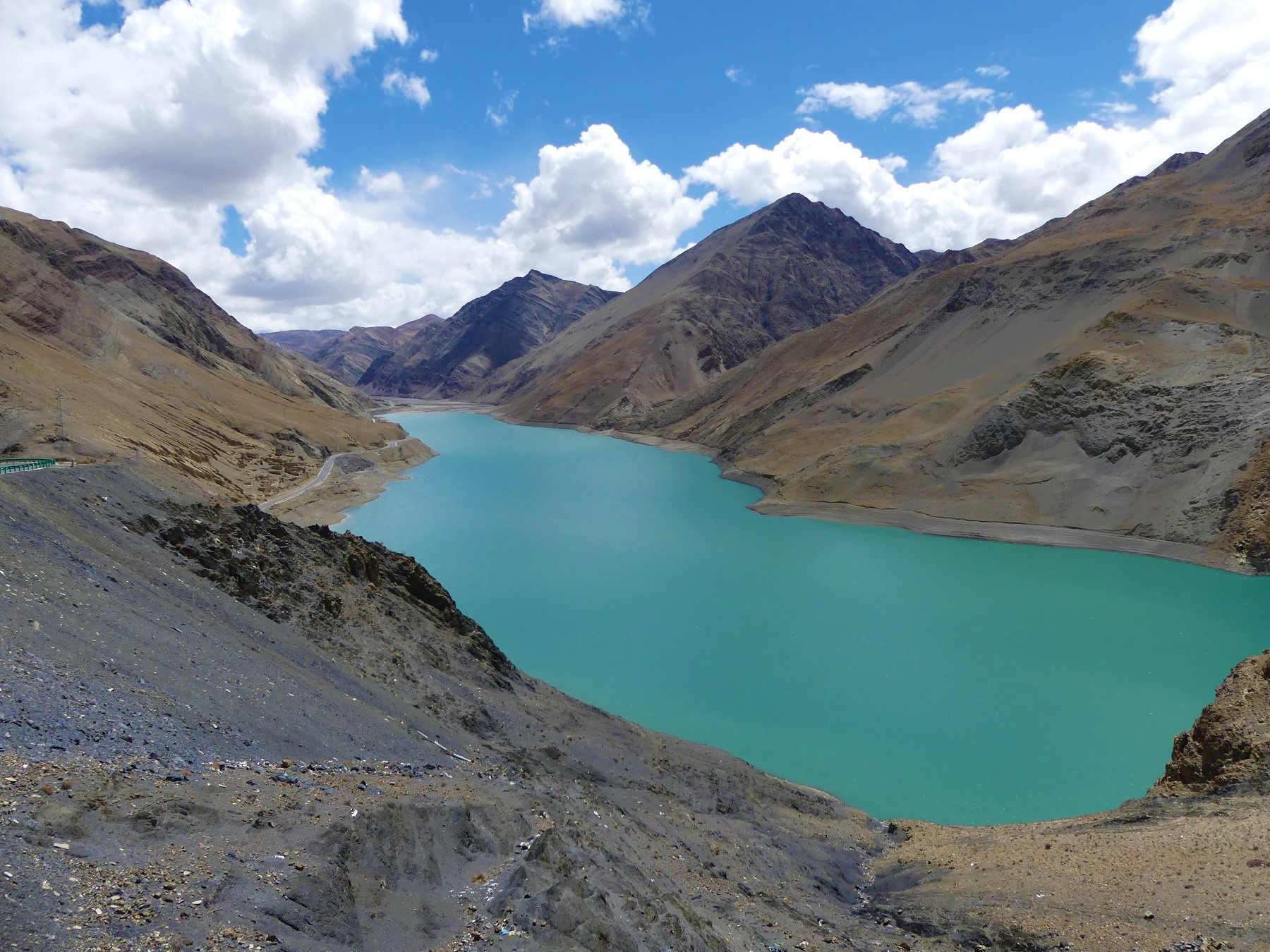
But we still had to get to Lhasa. Our day, although pretty, turned into 11 long hours in the bus. Every day we found out something new about how the local people have suppressed. There are so many checkpoints on the roads that help the authorities track every car and person. But today I found out that even the amount of petrol you put in your tank is checked and monitored. Because they are worried about self-immolations, you cannot even buy petrol without showing your licences and ID cards. I am not really sure the Chinese will ever grant the people even a semblance of freedom again.
China has been so interesting over the last two weeks. While the sights have been spectacular, it is always the people that make a trip interesting and enjoyable. In the same way that the friendly people of Malaysia made our trip infinitely better, the people of China are rude and disgusting. I realised that I have not seen a single person laugh or smile in all of our time in China. I have loved Tibet and especially Lhasa but the only people that are happy are the Tibetan children under the age of 10. I really hope that they can retain a carefree attitude and not be corrupted by the spiteful Chinese.
On the other hand, the Chinese have done a lot for Tibetans. The roads, the rail network, the electricity and telecoms would all not be there if it weren’t for the investment. The engineering of some of the mountain passes is amazing. But there is a price to pay for all these things. And the price for Tibetans is their freedoms.
